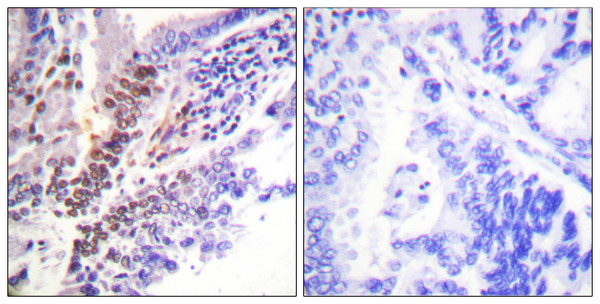| Post Translational Modifications | Acetylation by CLOCK reduces its binding to glucocorticoid response elements and its transcriptional activity. Increased proteasome-mediated degradation in response to glucocorticoids. Isoform Alpha-B appears to be more susceptible to proteolytic degradation than isoform Alpha. Phosphorylated in the absence of hormone.becomes hyperphosphorylated in the presence of glucocorticoid. The Ser-203, Ser-226 and Ser-404-phosphorylated forms are mainly cytoplasmic, and the Ser-211-phosphorylated form is nuclear. Phosphorylation at Ser-211 increases transcriptional activity. Phosphorylation at Ser-203, Ser-226 and Ser-404 decreases signaling capacity. Phosphorylation at Ser-404 may protect from glucocorticoid-induced apoptosis. Phosphorylation at Ser-203 and Ser-211 is not required in regulation of chromosome segregation. May be dephosphorylated by PPP5C, attenuates NR3C1 action. Ubiquitinated by UBR5, leading to its degradation: UBR5 specifically recognizes and binds ligand-bound NR3C1 when it is not associated with coactivators (NCOAs). In presence of NCOAs, the UBR5-degron is not accessible, preventing its ubiquitination and degradation. Sumoylation at Lys-277 and Lys-293 negatively regulates its transcriptional activity. Sumoylation at Lys-703 positively regulates its transcriptional activity in the presence of RWDD3. Sumoylation at Lys-277 and Lys-293 is dispensable whereas sumoylation at Lys-703 is critical for the stimulatory effect of RWDD3 on its transcriptional activity. Heat shock increases sumoylation in a RWDD3-dependent manner. |
| Function | Receptor for glucocorticoids (GC). Has a dual mode of action: as a transcription factor that binds to glucocorticoid response elements (GRE), both for nuclear and mitochondrial DNA, and as a modulator of other transcription factors. Affects inflammatory responses, cellular proliferation and differentiation in target tissues. Involved in chromatin remodeling. Plays a role in rapid mRNA degradation by binding to the 5' UTR of target mRNAs and interacting with PNRC2 in a ligand-dependent manner which recruits the RNA helicase UPF1 and the mRNA-decapping enzyme DCP1A, leading to RNA decay. Could act as a coactivator for STAT5-dependent transcription upon growth hormone (GH) stimulation and could reveal an essential role of hepatic GR in the control of body growth. Isoform Alpha: Has transcriptional activation and repression activity. Mediates glucocorticoid-induced apoptosis. Promotes accurate chromosome segregation during mitosis. May act as a tumor suppressor. May play a negative role in adipogenesis through the regulation of lipolytic and antilipogenic gene expression. Isoform Beta: Acts as a dominant negative inhibitor of isoform Alpha. Has intrinsic transcriptional activity independent of isoform Alpha when both isoforms are coexpressed. Loses this transcription modulator function on its own. Has no hormone-binding activity. May play a role in controlling glucose metabolism by maintaining insulin sensitivity. Reduces hepatic gluconeogenesis through down-regulation of PEPCK in an isoform Alpha-dependent manner. Directly regulates STAT1 expression in isoform Alpha-independent manner. Isoform Alpha-2: Has lower transcriptional activation activity than isoform Alpha. Exerts a dominant negative effect on isoform Alpha trans-repression mechanism. Isoform GR-P: Increases activity of isoform Alpha. Isoform Alpha-B: More effective than isoform Alpha in transcriptional activation, but not repression activity. Isoform 10: Has transcriptional activation activity. Isoform Alpha-C1: Has transcriptional activation activity. Isoform Alpha-C2: Has transcriptional activation activity. Isoform Alpha-C3: Has highest transcriptional activation activity of all isoforms created by alternative initiation. Has transcriptional repression activity. Mediates glucocorticoid-induced apoptosis. Isoform Alpha-D1: Has transcriptional activation activity. Isoform Alpha-D2: Has transcriptional activation activity. Isoform Alpha-D3: Has lowest transcriptional activation activity of all isoforms created by alternative initiation. Has transcriptional repression activity. |
| Protein Name | Glucocorticoid ReceptorGrNuclear Receptor Subfamily 3 Group C Member 1 |
| Database Links | Reactome: R-HSA-3371497Reactome: R-HSA-383280Reactome: R-HSA-400253Reactome: R-HSA-4090294Reactome: R-HSA-8849473Reactome: R-HSA-8939902Reactome: R-HSA-9615017Reactome: R-HSA-9679191Reactome: R-HSA-9768777 |
| Cellular Localisation | Isoform Alpha: CytoplasmNucleusMitochondrionCytoplasmCytoskeletonSpindleMicrotubule Organizing CenterCentrosomeChromosomeNucleoplasmAfter Ligand ActivationTranslocates From The Cytoplasm To The NucleusThe Hormone-Occupied Receptor Undergoes Rapid Exchange Between Chromatin And The Nucleoplasmic CompartmentIn The Presence Of Nr1d1 Shows A Time-Dependent Subcellular LocalizationLocalizing To The Cytoplasm At Zt8 And To The Nucleus At Zt20Lacks This Diurnal Pattern Of Localization In The Absence Of Nr1d1Localizing To Both Nucleus And The Cytoplasm At Zt8 And Zt20Upon Dexamethasone Binding Associates With The Glucocorticoid Response Elements Of Target GenesIsoform Beta: NucleusExpressed Predominantly In The Nucleus With Some Expression Also Detected In The CytoplasmIsoform Alpha-B: Nucleus |
| Alternative Antibody Names | Anti-Glucocorticoid Receptor antibodyAnti-Gr antibodyAnti-Nuclear Receptor Subfamily 3 Group C Member 1 antibodyAnti-NR3C1 antibodyAnti-GRL antibody |
Information sourced from Uniprot.org











